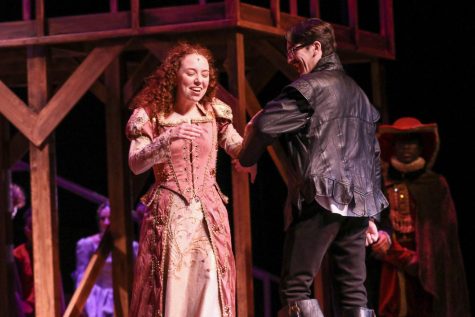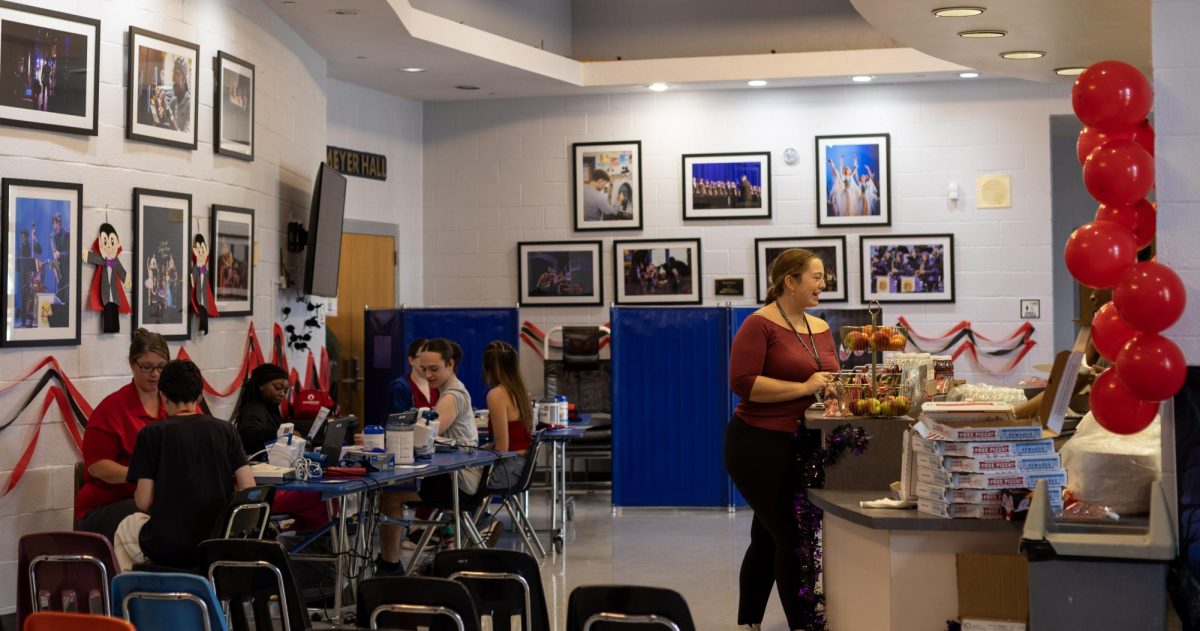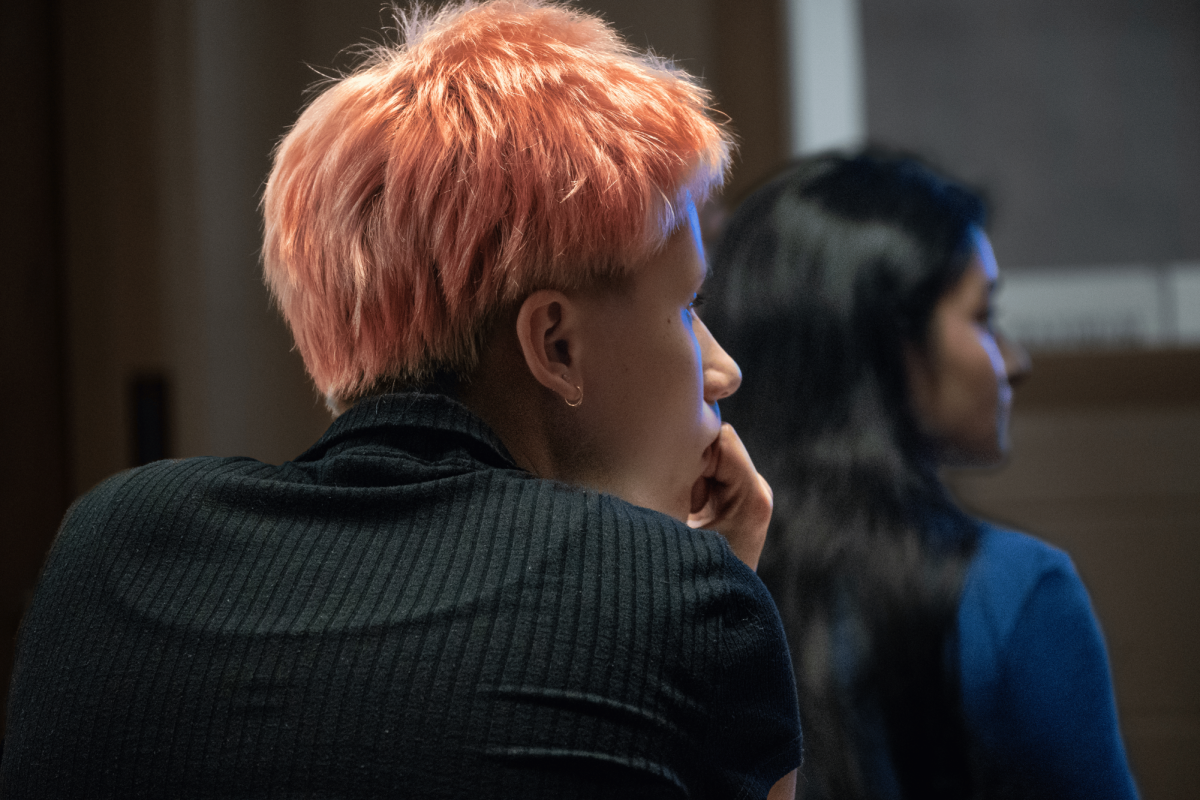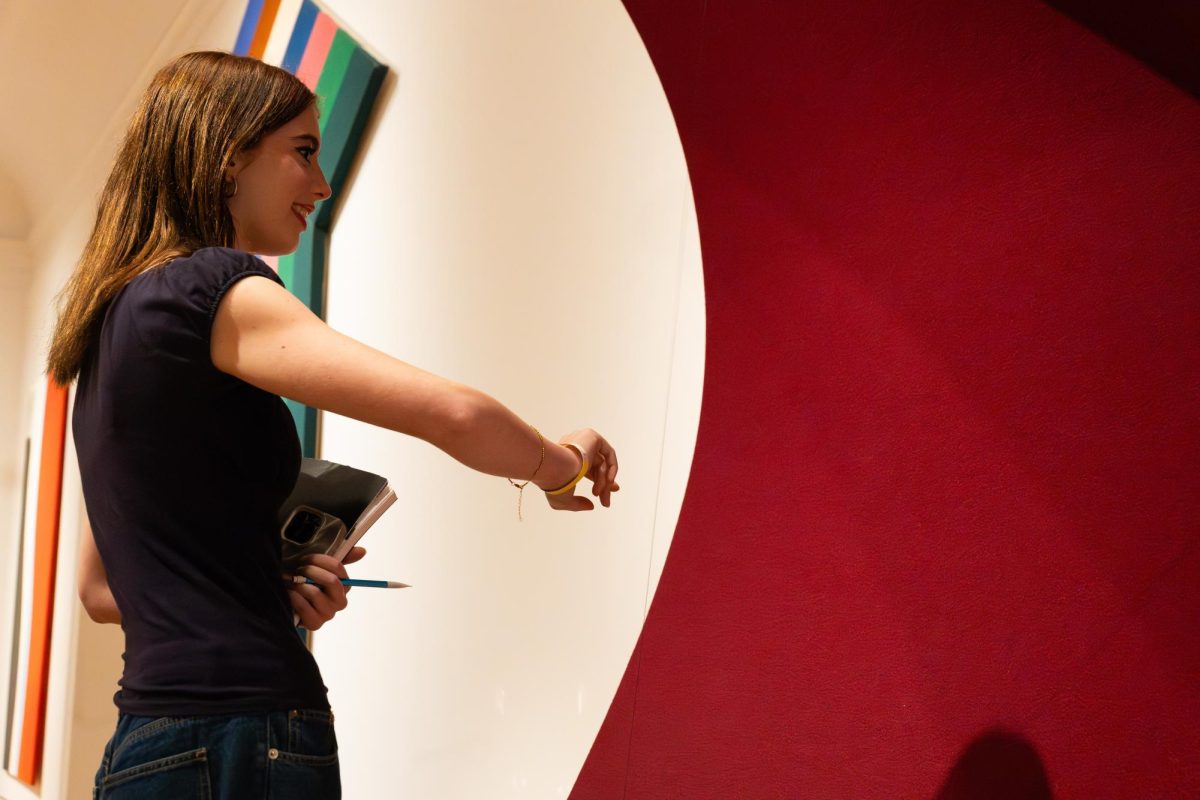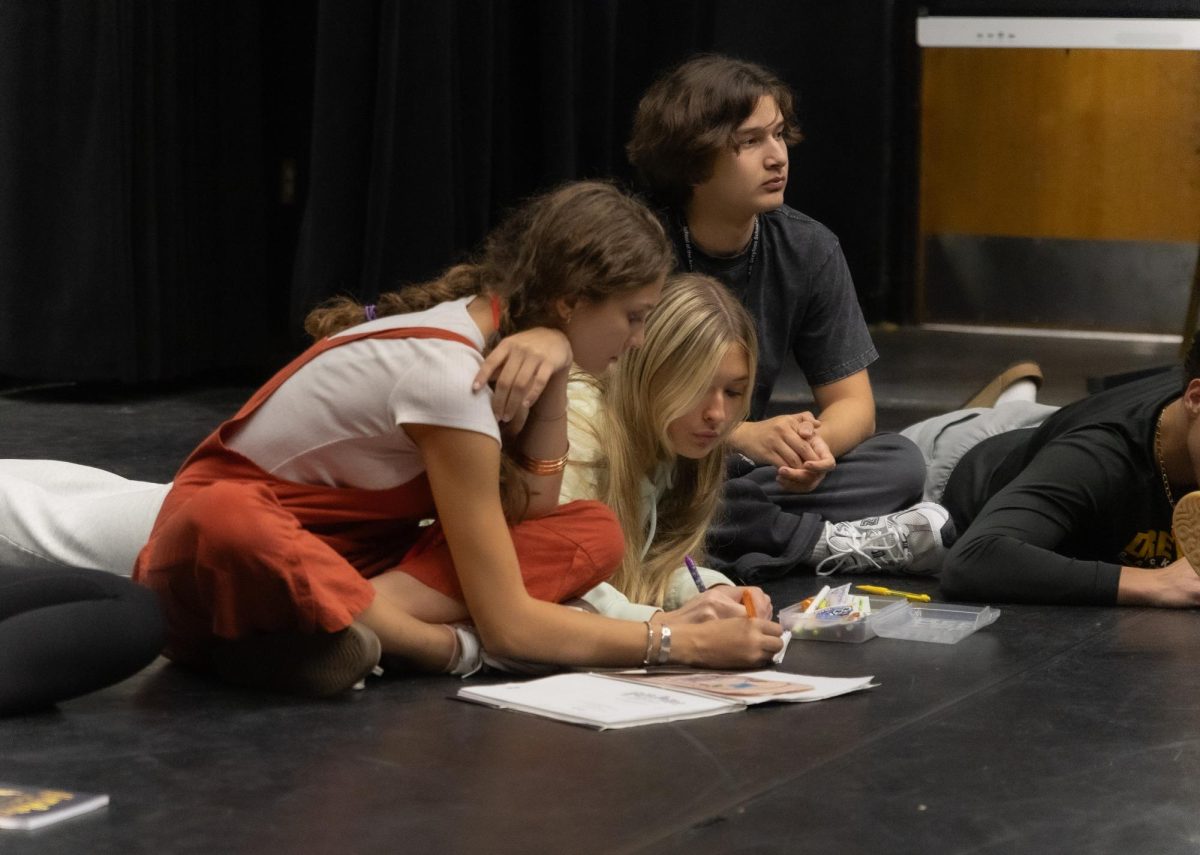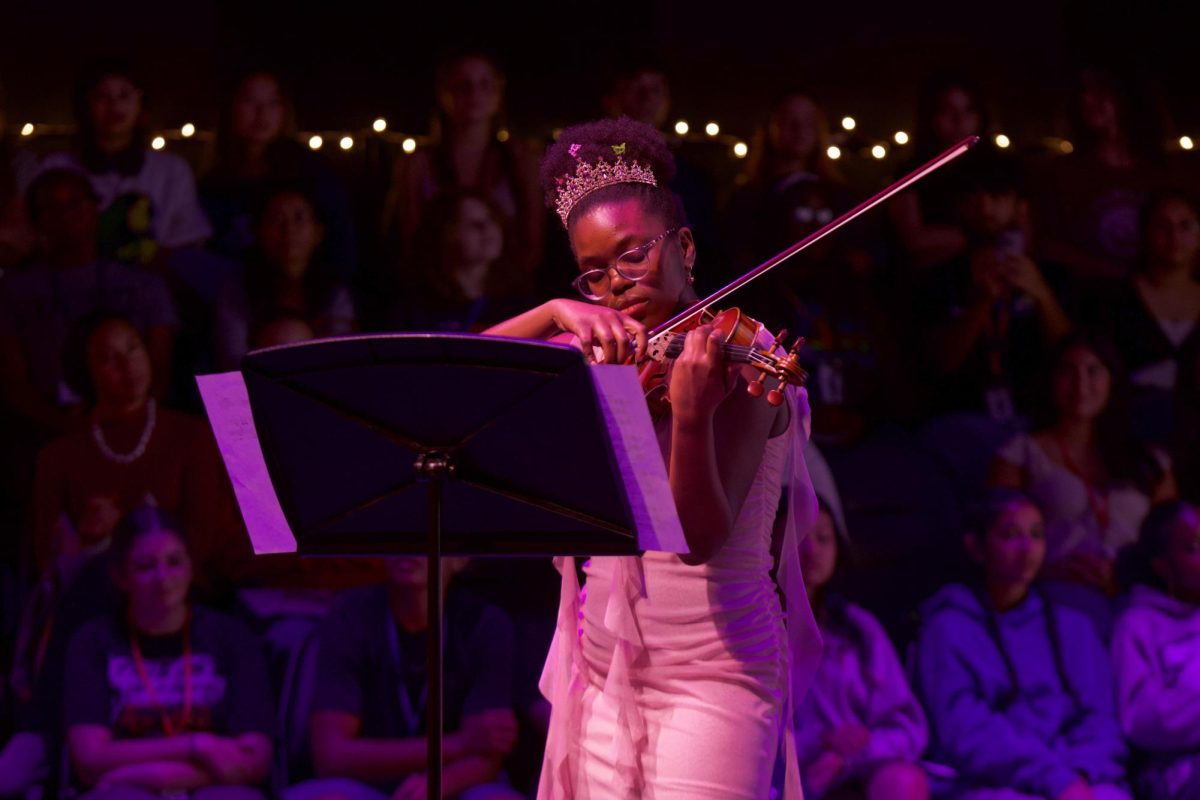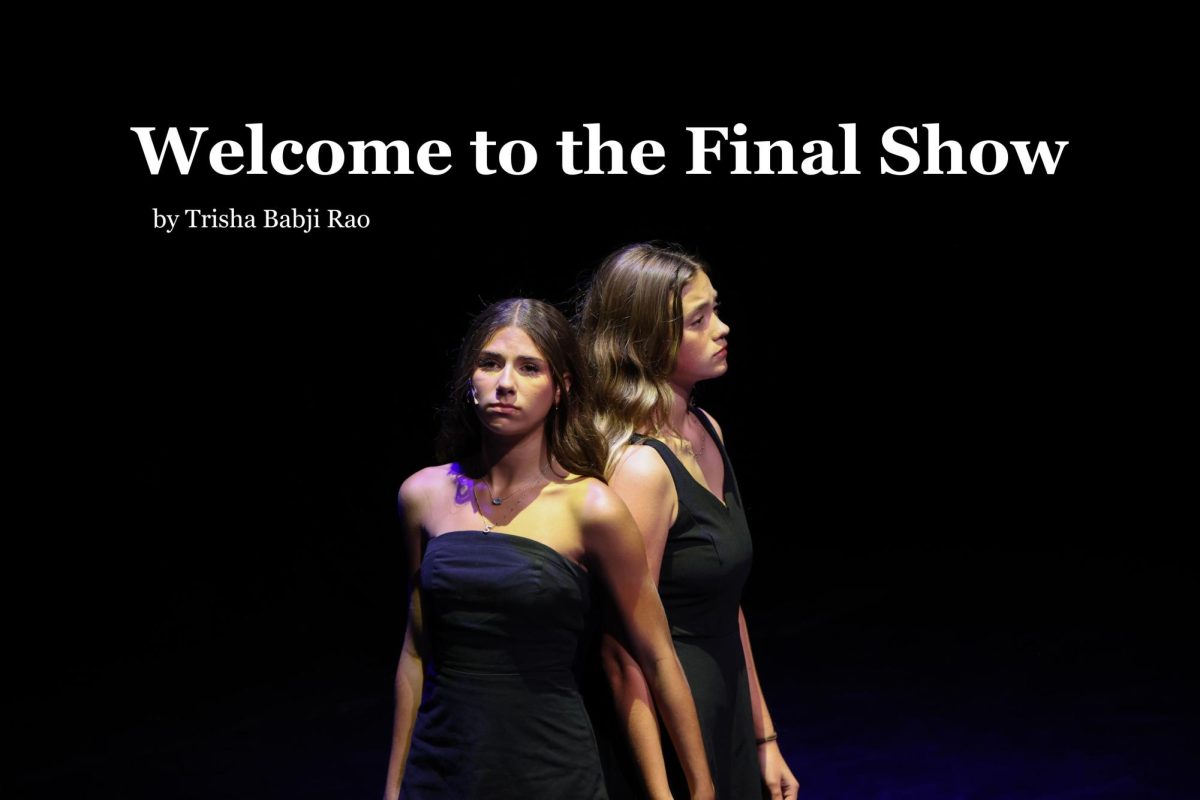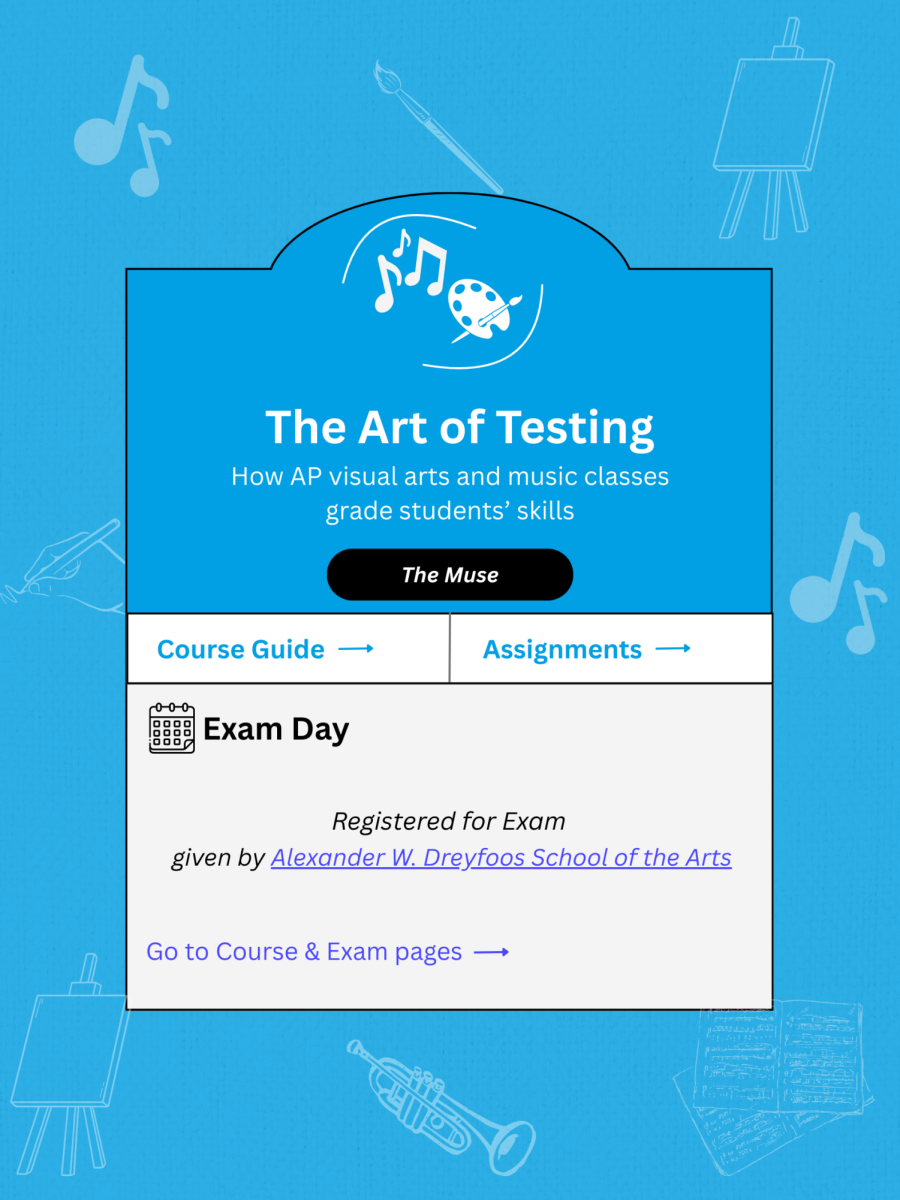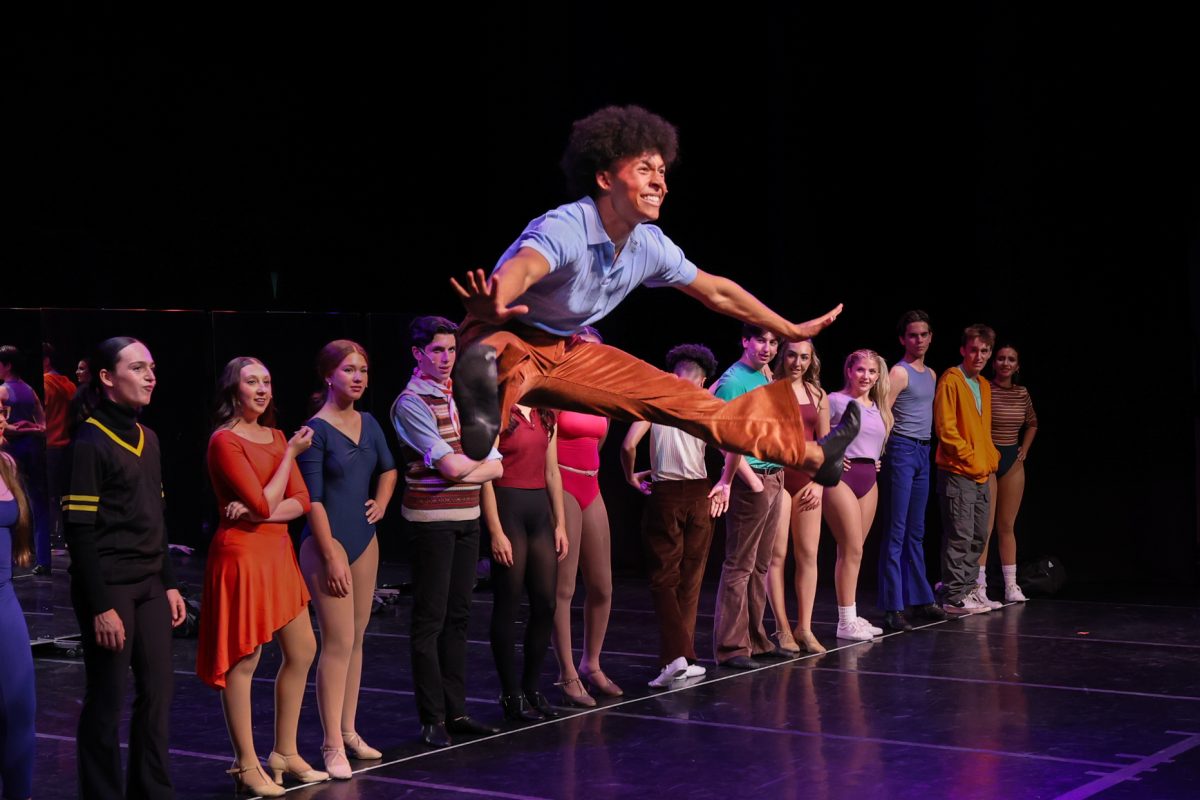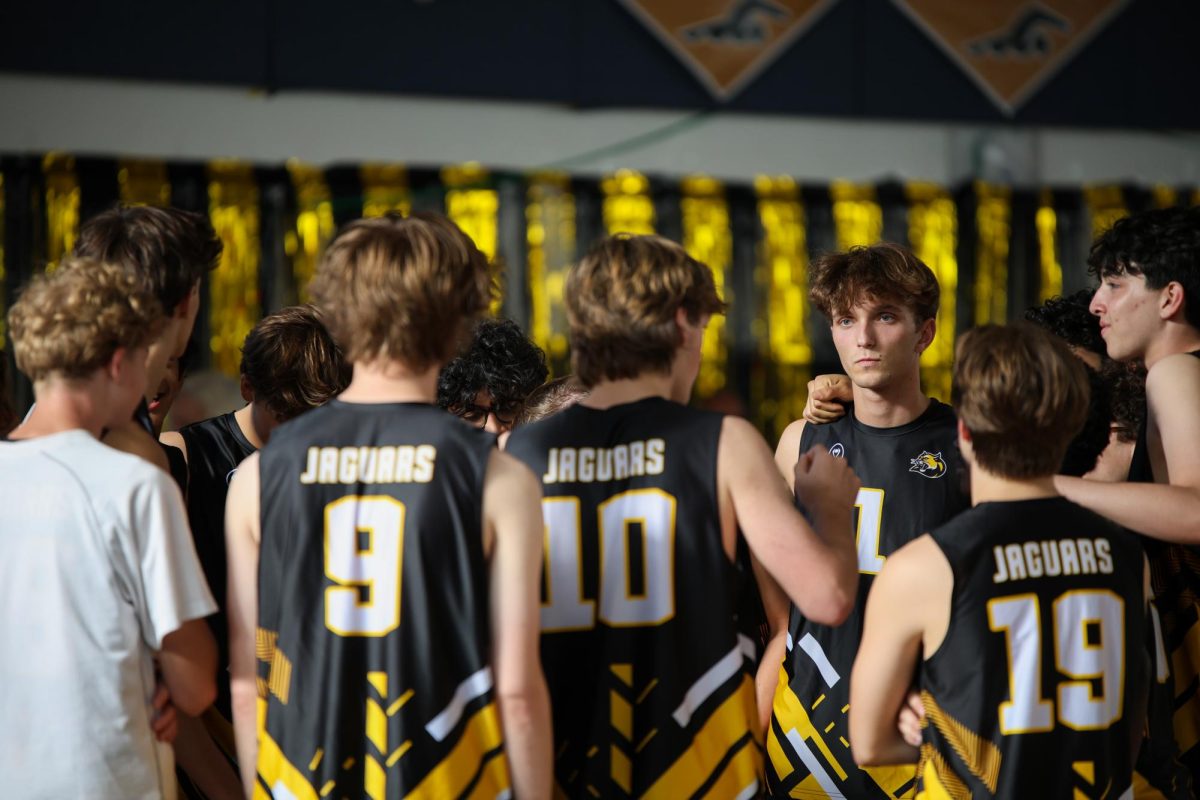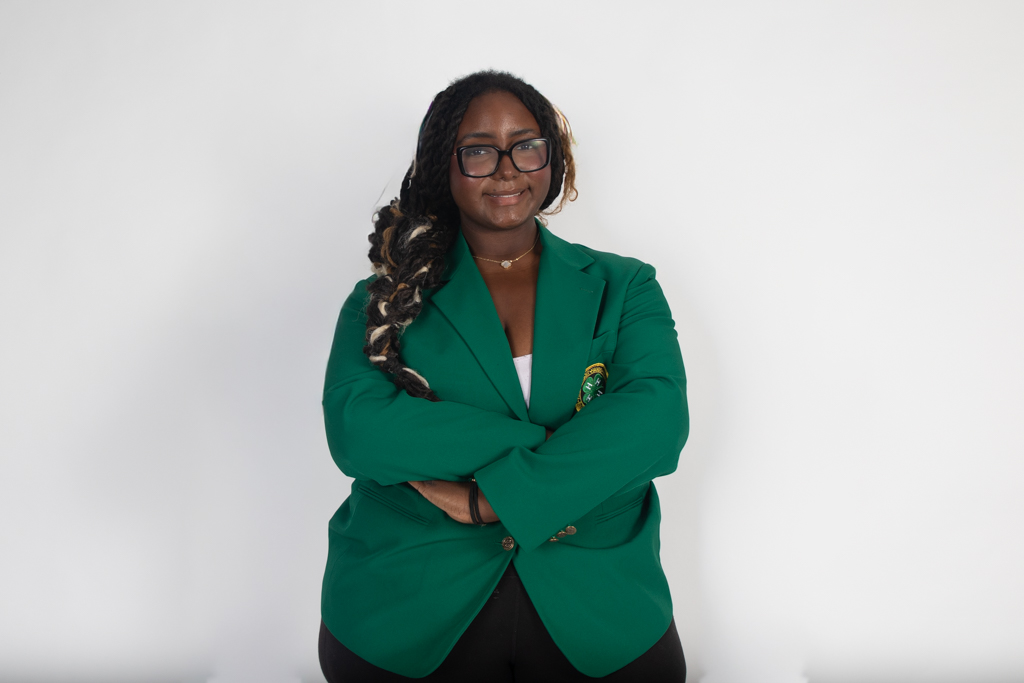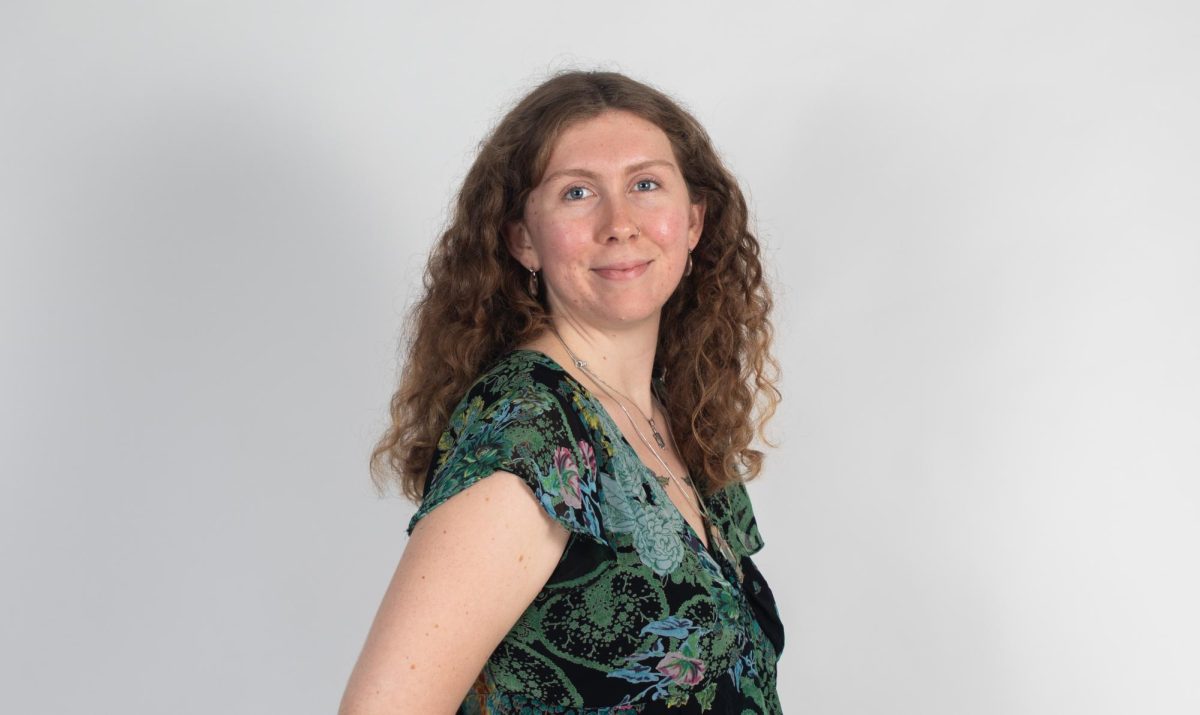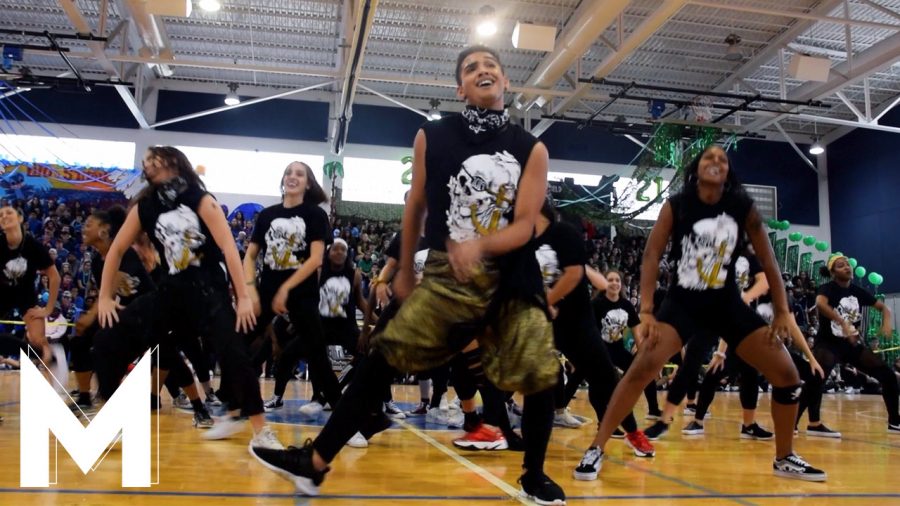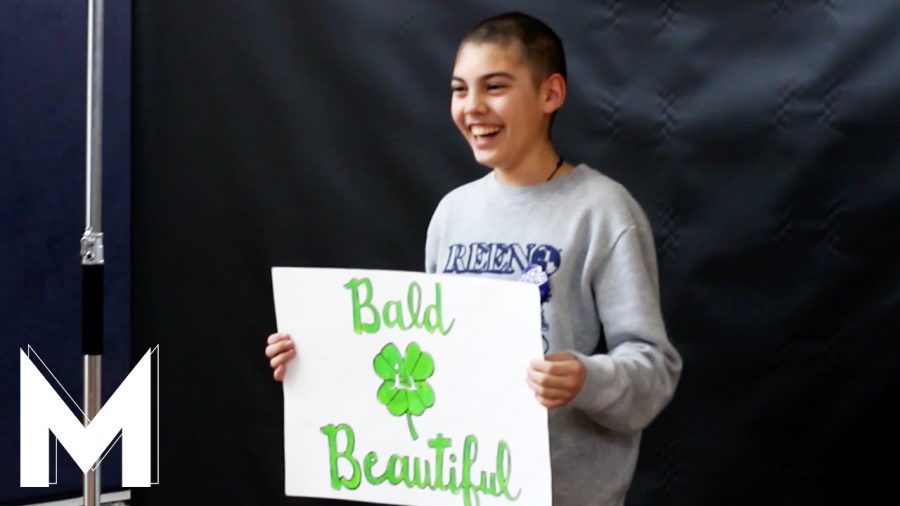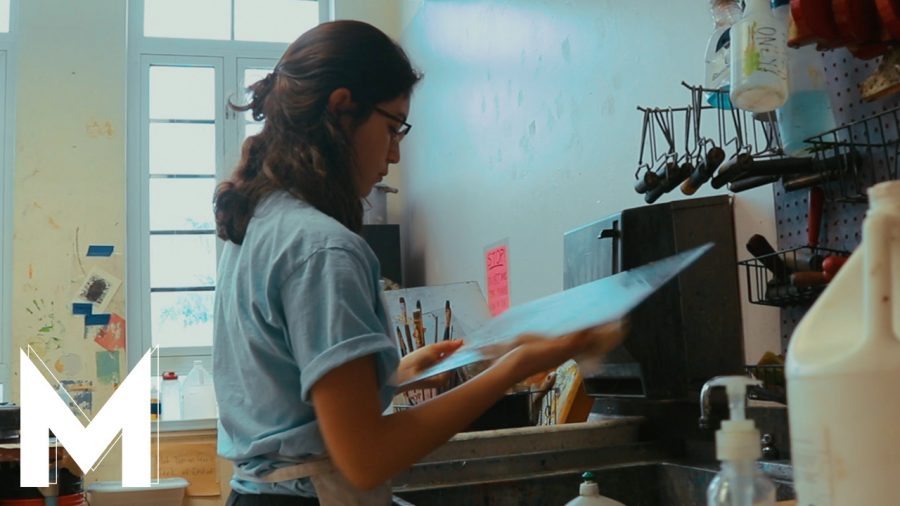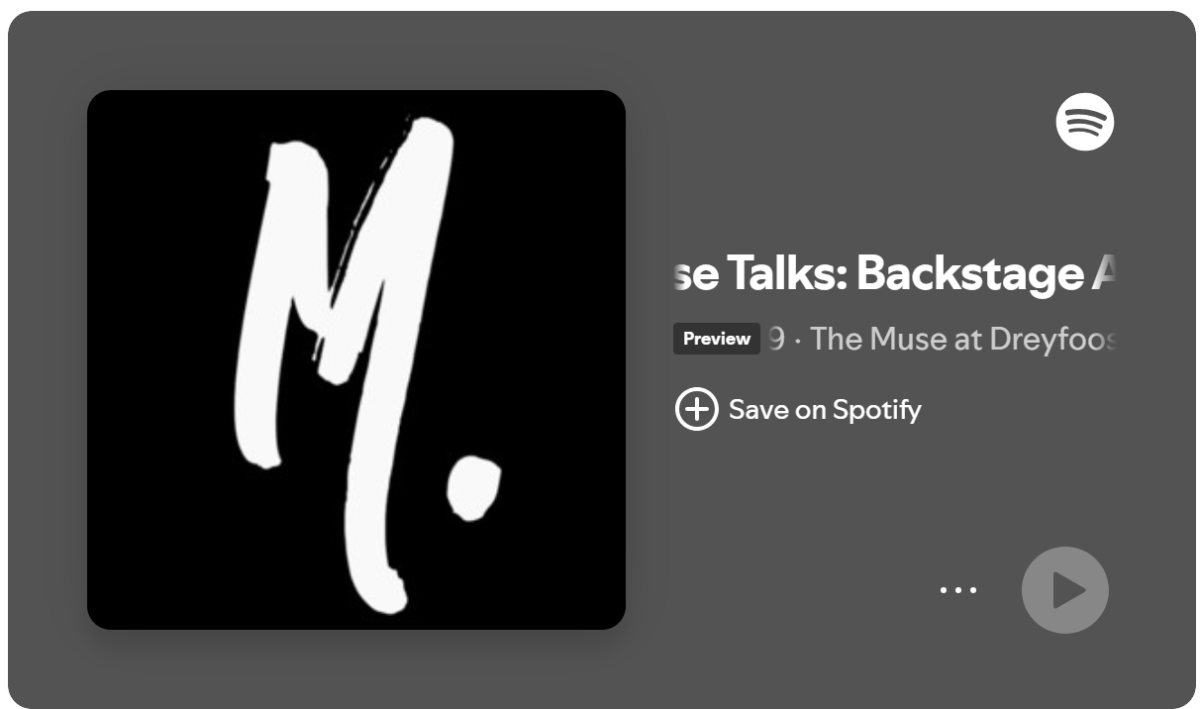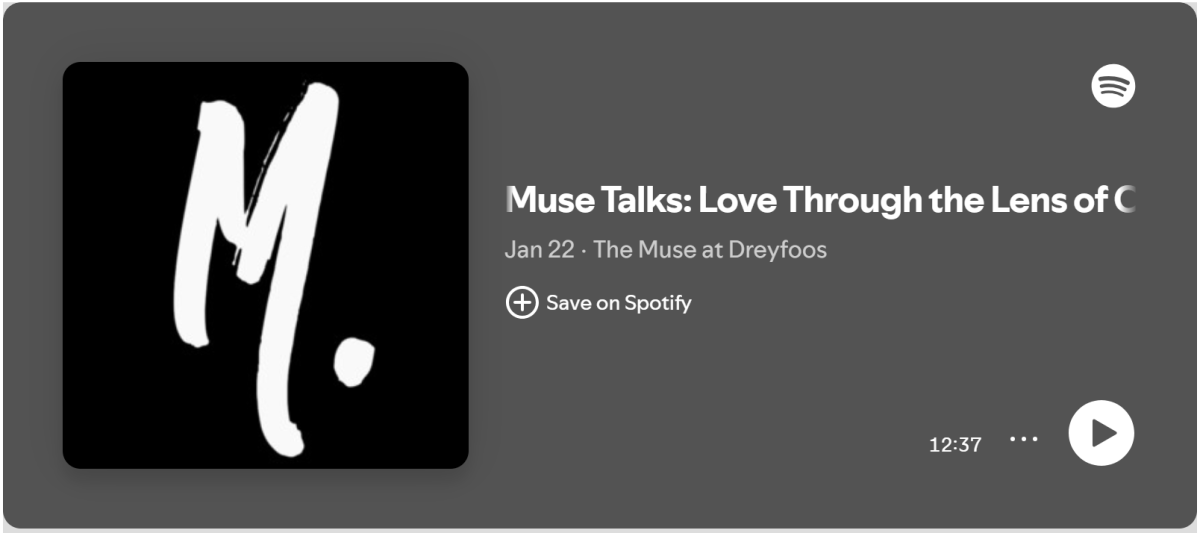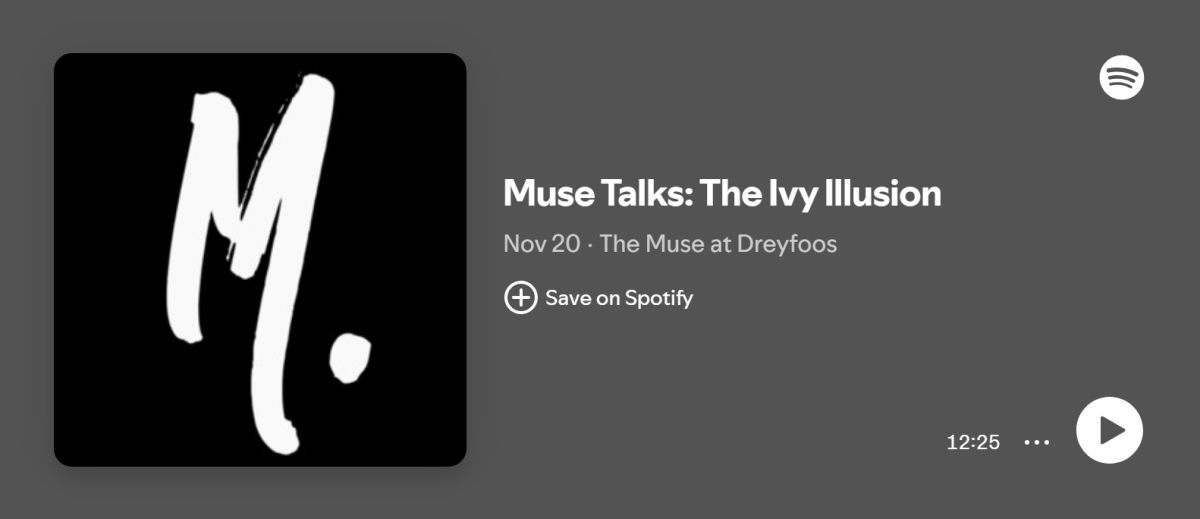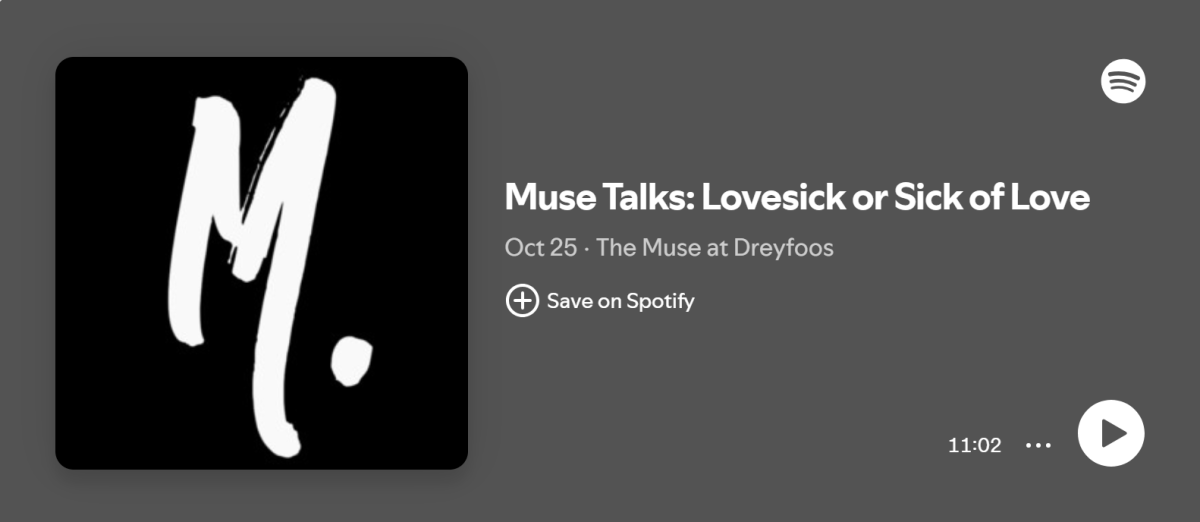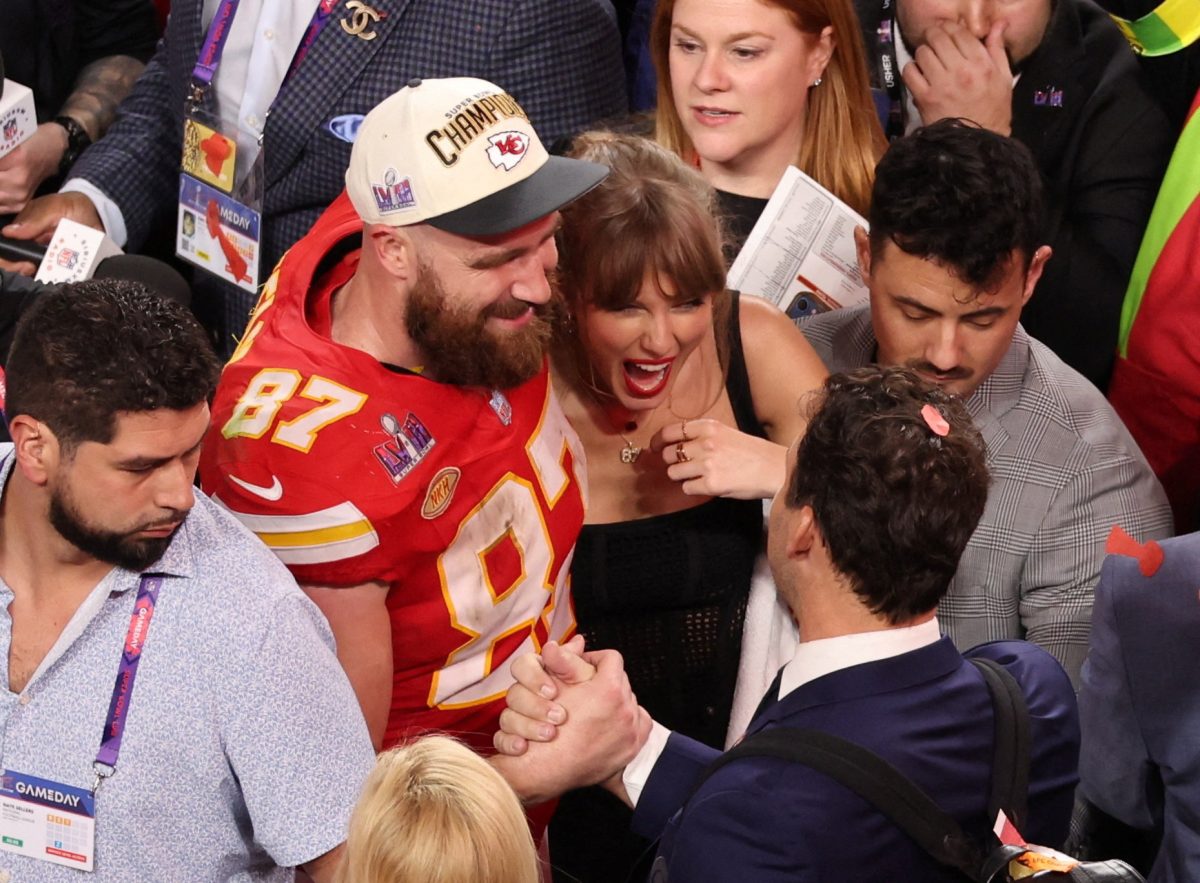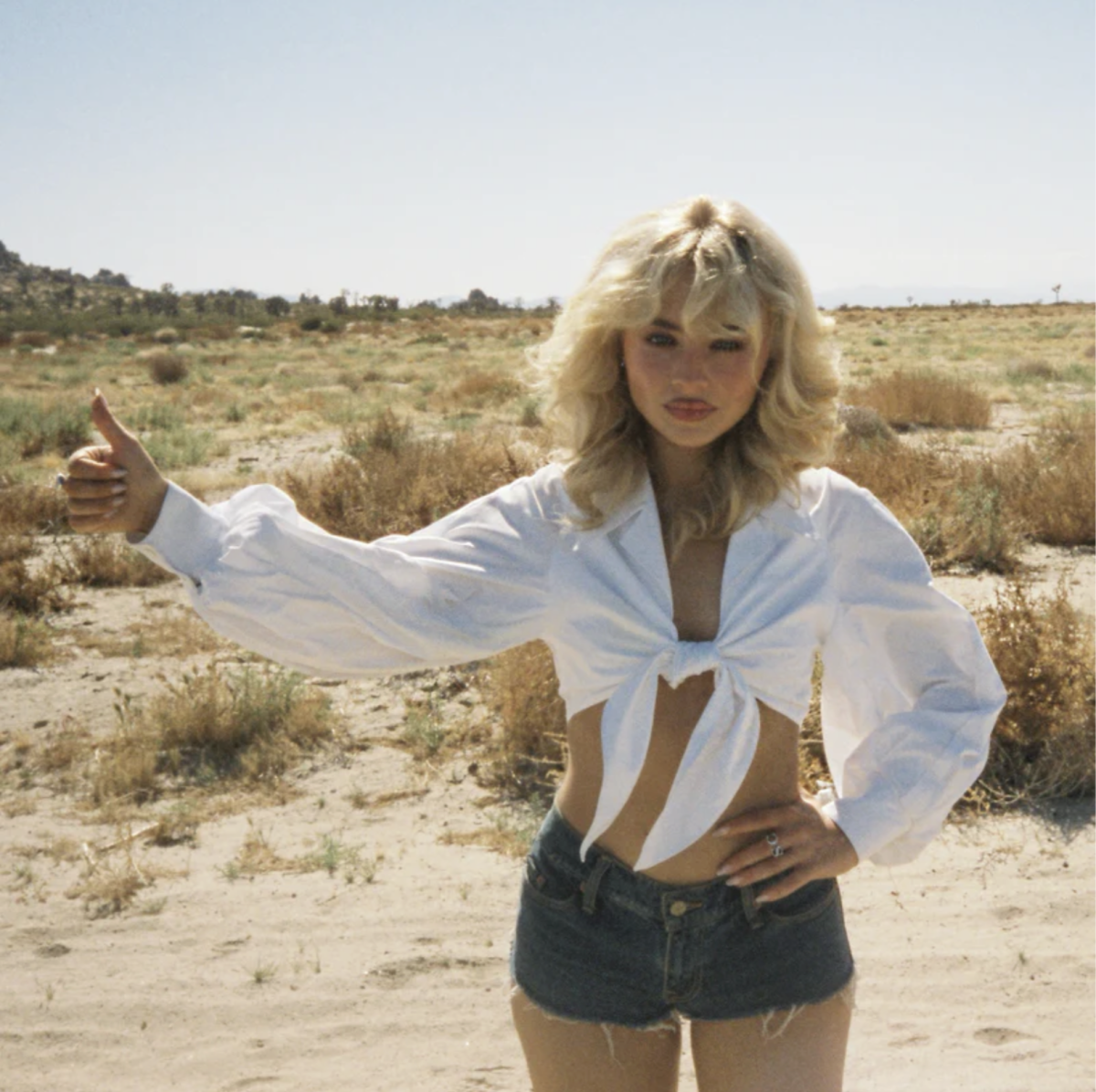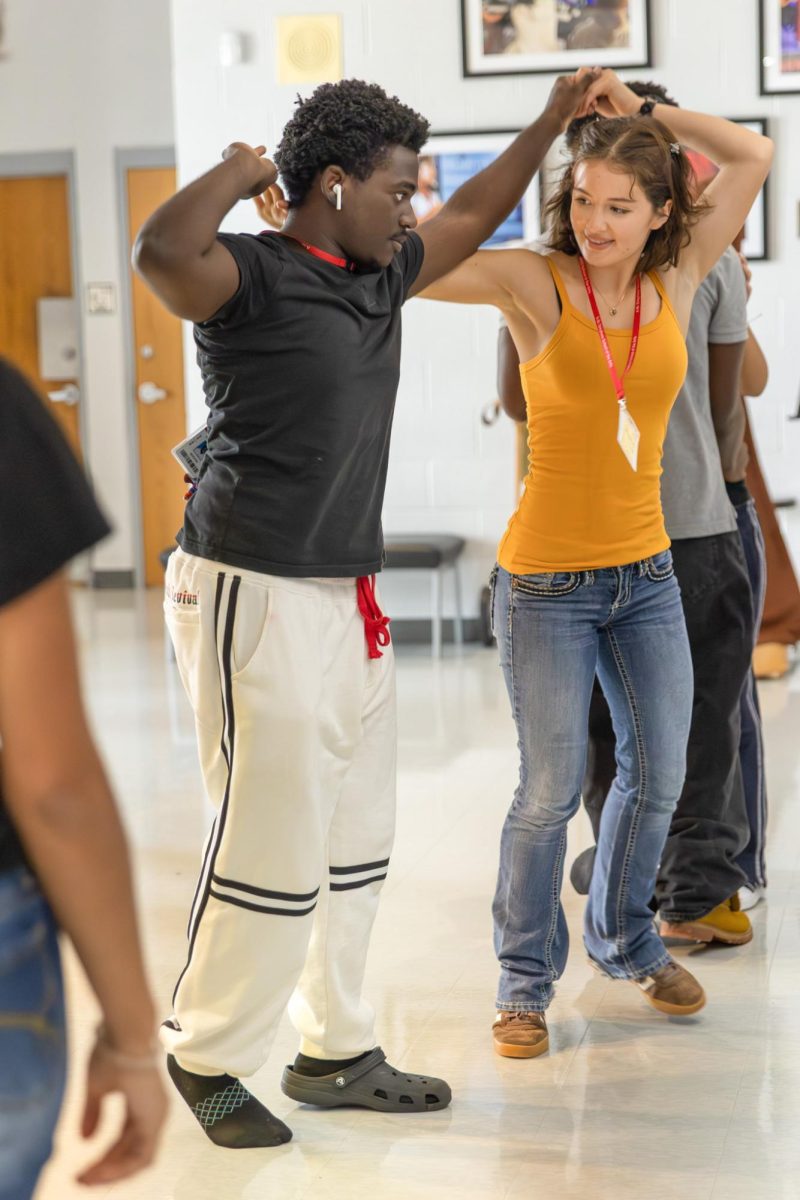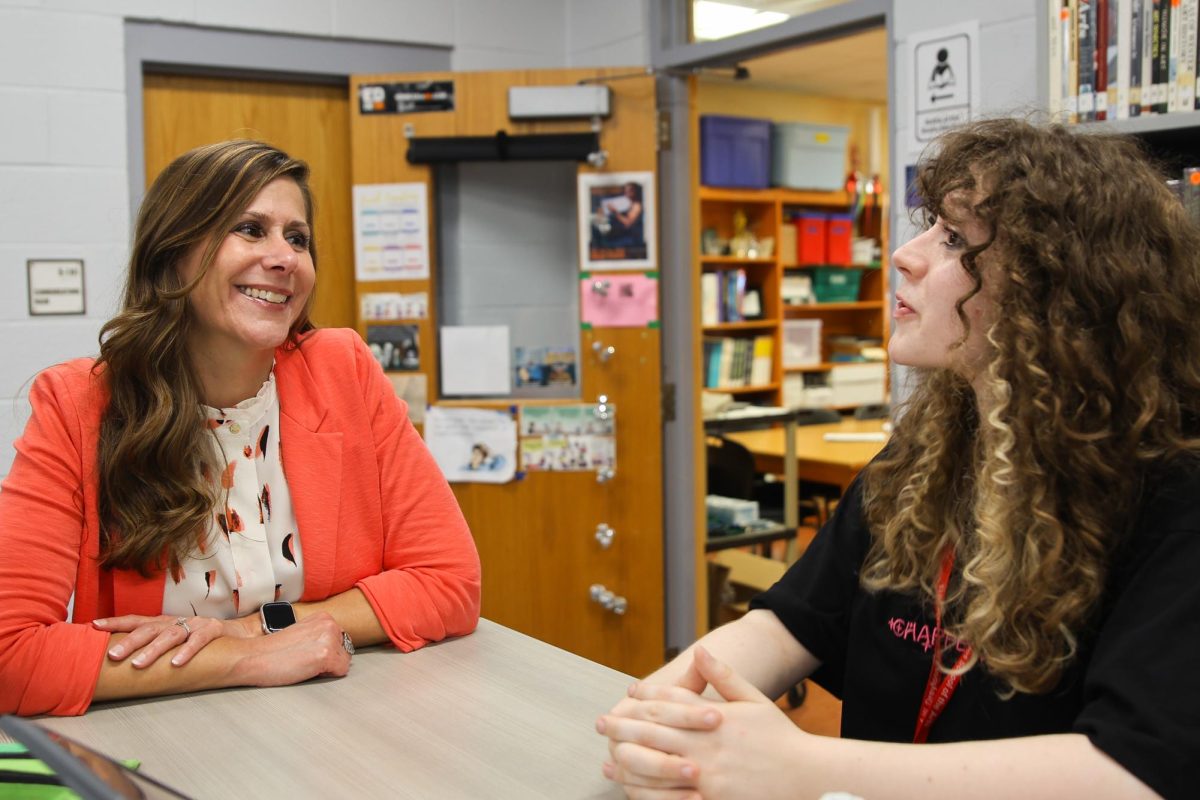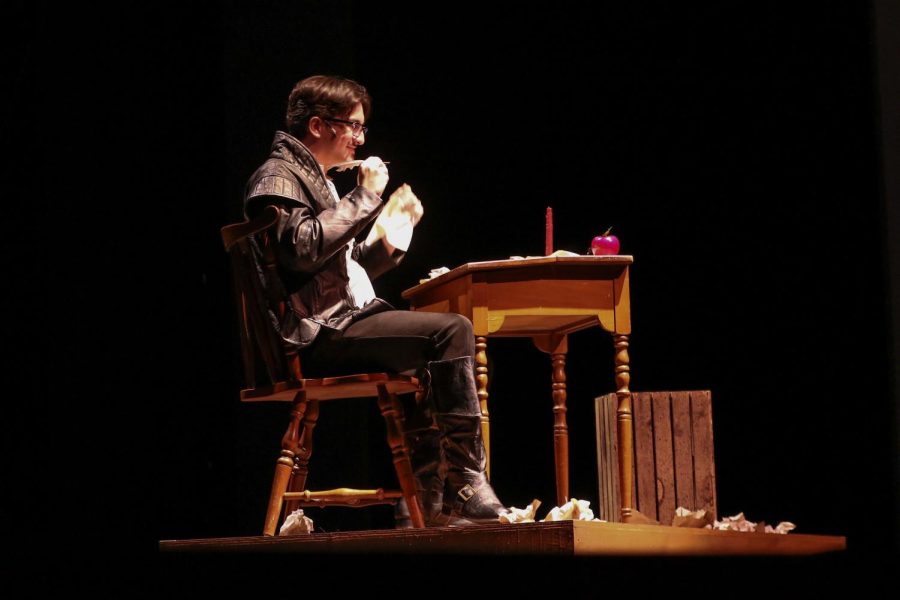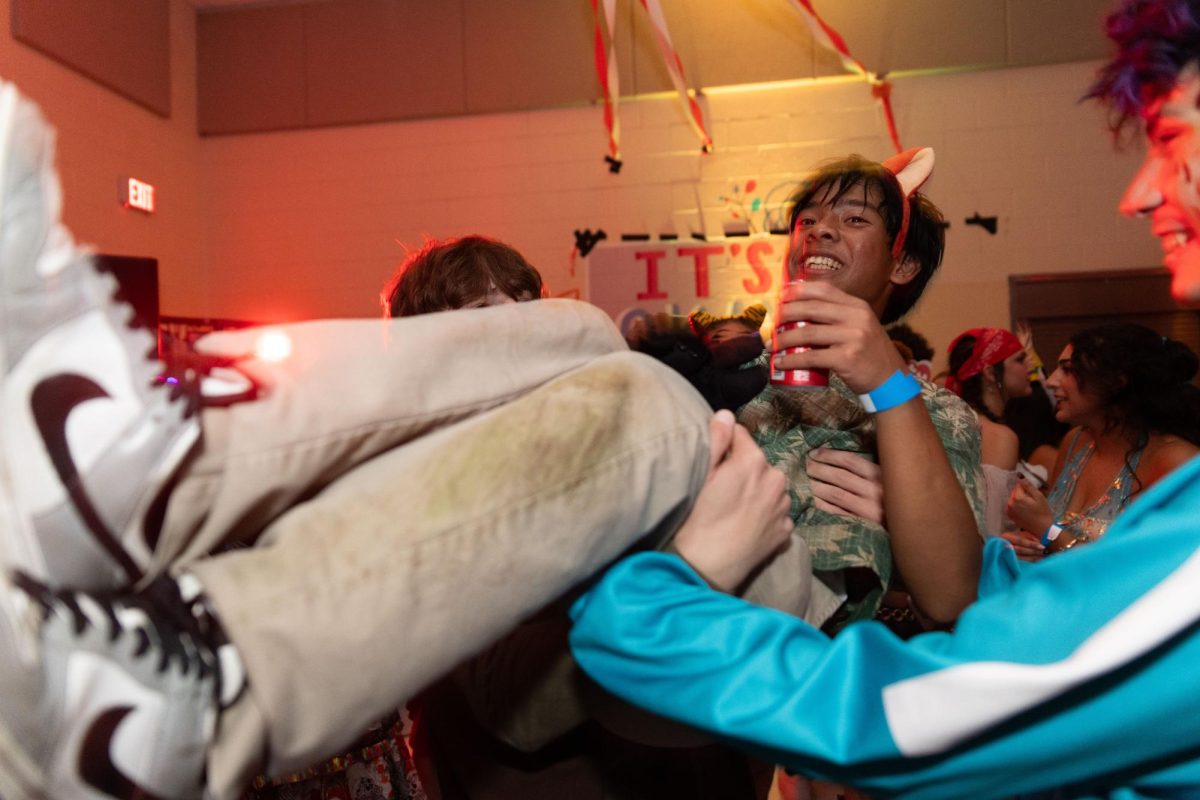The World is a Stage
Meyer Hall transforms into an Elizabethan theater of “Shakespeare in Love”
Under the spotlight, theatre junior Von Markarian sits at his desk onstage while trying to figure out what to write in his play. “This show has been not the most prop heavy, but we had to make a lot of paper. It’s about Shakespeare. Everybody’s writing and reading the whole time,” theatre junior Lucas Green said. “We didn’t want everybody to just be reading off of like bleached white paper. So we had to dye sheets of paper. We dyed them all brown with coffee.”
November 4, 2022
“Shall I compare thee to a, to a,” ponders William “Will” Shakespeare after the stage lights turn on, and the violin music fades. Sitting reclined with his feet on the prop desk, Shakespeare, played by theatre junior Von Markarian, crumples coffee-stained papers as he tries to create a line for his next play: “Romeo and Ethel; the pirate’s daughter.”
As “Shakespeare In Love” progressed, easter eggs were in almost every line as an ode to the playwright.
Before the Meyer Hall stage became a Shakespearean stage, in January a student committee chose the play, based on the screenplay written by Marc Norman and Tom Stoppard.
“We have a great cast of people. I’m very grateful and honored to play a part in the play as a whole,” Markarian said.
The committee’s desire to work on a Shakespearean show with a large ensemble made both students and faculty want to produce the show. “Shakespeare in Love” offered a love of Shakespeare’s works that also mixed comedy and drama.
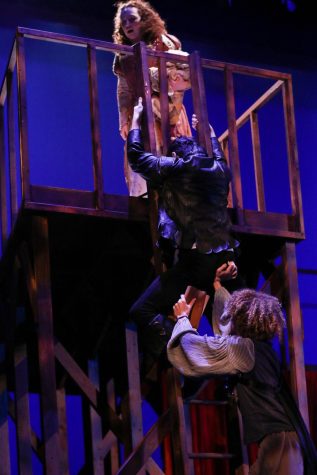
“That was what drew me to (the show). We have such talent at this school, and we look for titles that have such a large ensemble,” theatre dean and director of the show Kristina Leljedal said. “And then also getting to work with Shakespeare text.”
After the show was approved by students and faculty, the heads of pre-production started planning the set design and props. Technical theatre teacher and technical director for the show Nathanial Raymand asked theater junior Kylie Glassgold to design the set.
“I was very inspired by Hamilton,” Glassgold said. “I took from different theaters and came up with the shape. You had the main thrust, and then you had seating on the sides, which were multiple levels.”
The set’s goal was to make the audience feel like they were a part of the theater in 1597, using old Elizabethan Theaters as a reference for the stage design.
“I just love the shape of it,” Glassgold said. “It has the shadowing. The way it works with the lights looks so good.”
Auditions for the show started in August, with about 90 to 100 students auditioning with spoken word monologues that fit themes of the show.
While the technical crew worked in Meyer Hall for the set design, the actors started rehearsals in the black box. Besides coaching the actors to develop their characters, assistant director and theatre junior Gabriele Pettener also worked on the script for his role as the character Nol, who is one of the 16th century actors.
“I’m expected to consult with the director and find out what decision is better to be made and weigh out the pros and the cons (of each choice),” Pettener said.
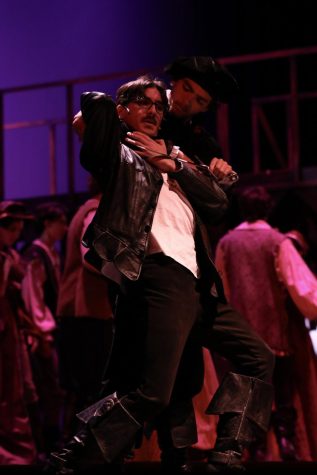
The actors, both the main cast and the ensemble, had to adopt personalities and situations to help them create a vision of who they are as a commoner or noble.
“The play’s depiction of William Shakespeare isn’t totally accurate,” Markarian said. “However, I’ve let the depiction of the character form all my odd, instinctual choices that fit the bill of this young, cocky, insecure nobody.” In the show, Markarian’s character struggles with artist’s block to write his latest play. After meeting theatre senior Felicia Voehringer’s character, Viola De Lesseps, Shakespeare considers her as his muse, inspiring him to write his most famous play, “Romeo and Juliet.”
Leljedal aimed for the show to be an homage to both the original 1998 movie and show of love for Shakespeare’s most famous plays.
To accomplish this, the directors and crew had to research the century Shakespeare lived in and how each of its characters and their respective social classes differentiated. In order to stay true to the time period, theatre junior and head of props Lucas Green manually made every prop for the show, including a boat which he claimed was “a fun one to figure out.”
“No one knew how the boat was gonna work because Ms. Leljedal wanted it to be in the pit,” Green said. “I had to figure out how to make the person (not only) be able to sit in the pit but also row oars.”
After the props were made — including hundreds of papers stained with coffee to resemble paper from the 16th century — the set was made, the cast and crew were ready to take to the main stage.
“I’m looking forward to see everything come together like the hair, the makeup, the costumes and being actually on that stage in the set, and seeing the light shining in our faces and the growth we’ve made (throughout rehearsal),” Pettener said.
After the music faded, the lights dimmed, and the props were set on the stage, technical theatre junior and stage manager Maya Gary kept track of the show’s production and kept communication clear between actors and stage crew.
“I love sitting down with everyone and seeing what they’ve done and what their progress has been,” Gary said. “Every week, it’s like a new feeling of ‘Oh my God, we have chandeliers,’ (or) ‘Oh my God, we have lights.’ Watching all this come together slowly has been so exciting to me.”
As Gary transitioned into the first scenes of the show, the stage light turned on for Shakespeare’s first monologue where he talked to himself about ideas for his newest show.
“What we hope to get by the end of the play (is that it’s not a comedy). It is heart-wrenching,” Leljedal said. “Real life drama. That’s what the queen sort of says that she’s like, ‘Plays can’t make me feel something’ and then (Shakespeare) proves that it does. It’s real. It’s important.”
